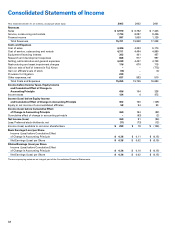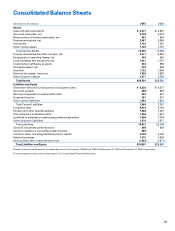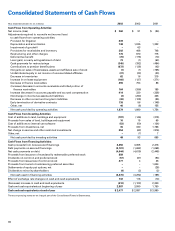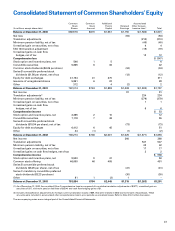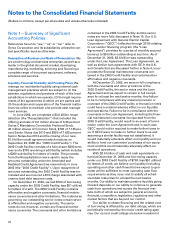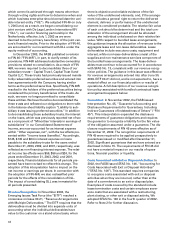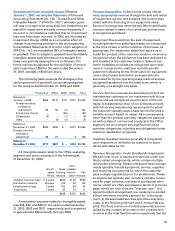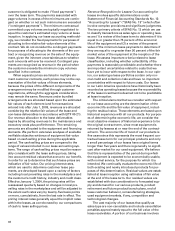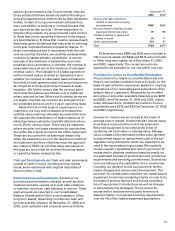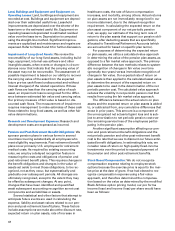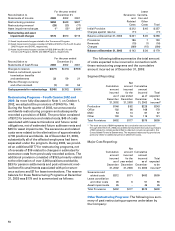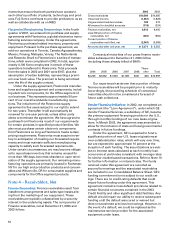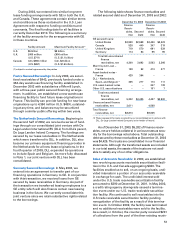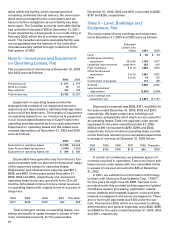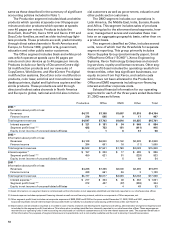Xerox 2003 Annual Report Download - page 50
Download and view the complete annual report
Please find page 50 of the 2003 Xerox annual report below. You can navigate through the pages in the report by either clicking on the pages listed below, or by using the keyword search tool below to find specific information within the annual report.
48
healthcare costs, the rate of future compensation
increases, and mortality, among others. Actual returns
on plan assets are not immediately recognized in our
income statement, due to the delayed recognition
requirement. In calculating the expected return on the
plan asset component of our net periodic pension
cost, we apply our estimate of the long term rate of
return to the plan assets that support our pension obli-
gations, after deducting assets that are specifically
allocated to Transitional Retirement Accounts (which
are accounted for based on specific plan terms).
For purposes of determining the expected return
on plan assets, we utilize a calculated value approach
in determining the value of the pension plan assets, as
opposed to a fair market value approach. The primary
difference between the two methods relates to system-
atic recognition of changes in fair value over time
(generally two years) versus immediate recognition of
changes in fair value. Our expected rate of return on
plan assets is then applied to the calculated asset value
to determine the amount of the expected return on
plan assets to be used in the determination of the net
periodic pension cost. The calculated value approach
reduces the volatility in net periodic pension cost that
results from using the fair market value approach.
The difference between the actual return on plan
assets and the expected return on plan assets is added
to, or subtracted from, any cumulative differences that
arose in prior years. This amount is a component of
the unrecognized net actuarial (gain) loss and is sub-
ject to amortization to net periodic pension cost over
the remaining service lives of the employees partici-
pating in the pension plan.
Another significant assumption affecting our pen-
sion and post-retirement benefit obligations and the
net periodic pension and other post-retirement benefit
cost is the rate that we use to discount our future antic-
ipated benefit obligations. In estimating this rate, we
consider rates of return on high quality fixed-income
investments over the period to expected payment of
the pension and other post-retirement benefits.
Stock-Based Compensation: We do not recognize
compensation expense relating to employee stock
options because the exercise price is equal to the mar-
ket price at the date of grant. If we had elected to rec-
ognize compensation expense using a fair value
approach, and therefore determined the compensa-
tion based on the value as determined by the modified
Black-Scholes option pricing model, our pro forma
income (loss) and income (loss) per share would have
been as follows:
Land, Buildings and Equipment and Equipment on
Operating Leases: Land, buildings and equipment are
recorded at cost. Buildings and equipment are depreci-
ated over their estimated useful lives. Leasehold
improvements are depreciated over the shorter of the
lease term or the estimated useful life. Equipment on
operating leases is depreciated to estimated residual
value over the lease term. Depreciation is computed
using the straight-line method. Significant improve-
ments are capitalized and maintenance and repairs are
expensed. Refer to Notes 5 and 6 for further discussion.
Impairment of Long-Lived Assets: We review the
recoverability of our long-lived assets, including build-
ings, equipment, internal-use software and other
intangible assets, when events or changes in circum-
stances occur that indicate that the carrying value of
the asset may not be recoverable. The assessment of
possible impairment is based on our ability to recover
the carrying value of the asset from the expected
future pre-tax cash flows (undiscounted and without
interest charges) of the related operations. If these
cash flows are less than the carrying value of such
asset, an impairment loss is recognized for the differ-
ence between estimated fair value and carrying value.
Our primary measure of fair value is based on dis-
counted cash flows. The measurement of impairment
requires management to make estimates of these cash
flows related to long-lived assets, as well as other fair
value determinations.
Research and Development Expenses: Research and
development costs are expensed as incurred.
Pension and Post-Retirement Benefit Obligations: We
sponsor pension plans in various forms in several
countries covering substantially all employees who
meet eligibility requirements. Post-retirement benefit
plans cover primarily U.S. employees for retirement
medical costs. As required by existing accounting
rules, we employ a delayed recognition feature in
measuring the costs and obligations of pension and
post-retirement benefit plans. This requires changes in
the benefit obligations and changes in the value of
assets set aside to meet those obligations, to be rec-
ognized, not as they occur, but systematically and
gradually over subsequent periods. All changes are
ultimately recognized, except to the extent they may
be offset by subsequent changes. At any point,
changes that have been identified and quantified
await subsequent accounting recognition as net cost
components and as liabilities or assets.
Several statistical and other factors that attempt to
anticipate future events are used in calculating the
expense, liability and asset values related to our pen-
sion and post-retirement benefit plans. These factors
include assumptions we make about the discount rate,
expected return on plan assets, rate of increase in


